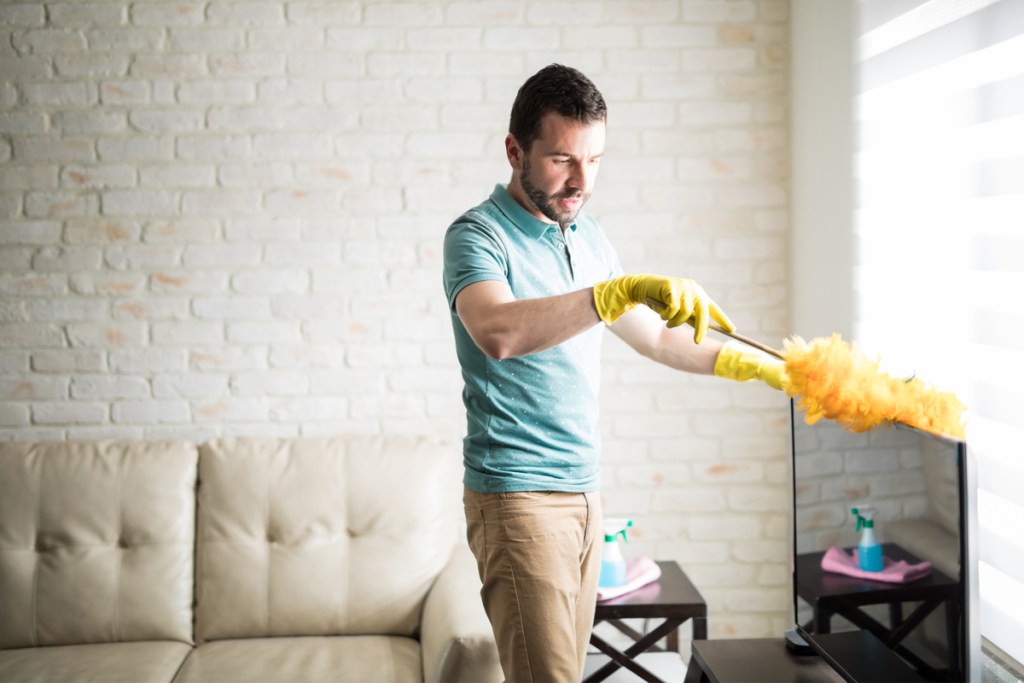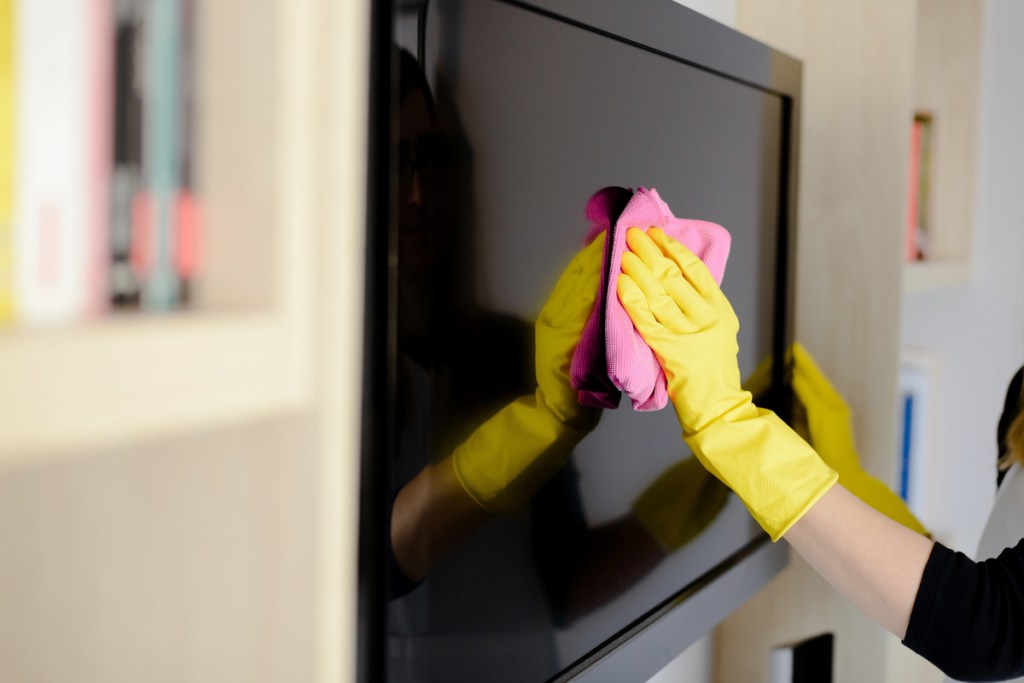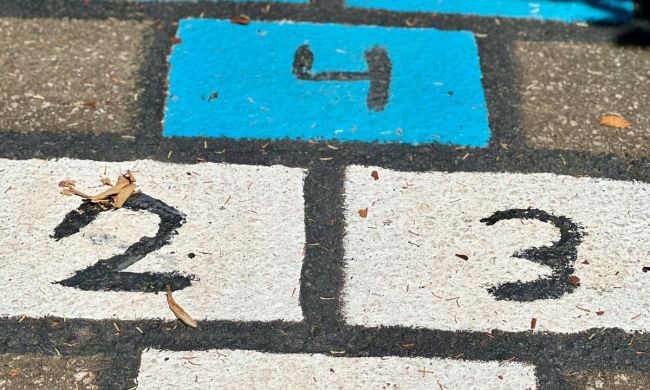You probably dust your television from time to time as part of your weekly routine to keep the house tidy. Spring cleaning, however, involves a deeper clean. The annual ritual of spring cleaning actually dates back centuries. People around the world get out the cleaning supplies in an attempt to purge the house from those dust bunnies hiding under the furniture. If you’re wondering how to clean a TV, you aren’t alone. The television may not have dust bunnies controlling the remote, but TVs do attract quite a bit of other dust and other grime, especially if you have kiddos who love to touch the screen. Just like other parts of the home, the television requires some TLC when family spring cleaning gets underway.

How to clean a TV
Alright, let’s get those cleaning cloths ready because you don’t want to use paper towels to clean your television screen. What else can’t you use? Let’s find out.
What not to use to clean your television
Windex sounds like a good idea when giving your screen a wipe, but it’s a don’t. Avoid Windex and any other glass cleaners because of the ammonia. Ammonia can damage television screens, and the same goes for cleaning solutions containing ethyl alcohol, acetone, toluene, ethyl acid or methyle. As we said, ditch the paper towel because they can leave behind bits of paper that aren’t screen friendly.
If you happen to have an old fashioned television with a glass screen, you can use typical glass cleaners like Windex.
What should you use to clean your television?
When you’re ready to clean off your television screen, always use a clean microfiber cloth or a dusting cloth. Dirty cloths may have particles that can scratch the screen. Make sure the cloth is lint-free. As far as a cleaning agent, you can make a homemade solution using the following ingredients.
- distilled water
- isopropyl alcohol
Use a measuring cup to mix equal parts of distilled water and isopropyl alcohol. If your measurement isn’t exact because you don’t have a measuring cup, the solution shouldn’t contain more isopropyl alcohol than distilled water.
Turn off the television
Now that you have your TV cleaning supplies, turn off the television and allow it to cool down before cleaning. Cleaning the TV hot may result in damaging the screen.

Cleaning the screen
Once your TV is cool, take a dusting cloth and remove the dust. Even though you’ve dusted it, a spring cleaning needs a bit more, which is where the homemade solution comes in to remove any extra dirt and grime that builds up on the screen. Next, wet a lint-free, damp cloth. Wring out the excess solution. The cloth should be damp, not wet. Gently clean the screen. Then, take a second lint-free cloth and dry the screen. Never leave the screen wet. Allow it to dry completely before turning the television back on.
For the rest of the television, microfiber dusting cloths or dusters work well to remove any built up dust from behind the television or along the wires. Swifter dusting cloths and dusters are great for cleaning off the accumulating dust from all over your television, as well as the wall behind it.
Avoid spraying dusting chemicals on your television’s body. It’s an electronic, after all, and cleaning sprays like Pledge can cause damage. The same is true for pre-treated dusting cloths. Those may be great for furniture, but they will leave behind an oily residue on electronics.
Other options
If you prefer not to use a homemade solution for cleaning the television screen, you can use pre-moistened wipes specifically designed for electronics.
How to avoid streaks
You don’t want cleaning steaks on windows, mirrors or television screens. So, how do you keep them away? Remember not to use pre-treated dust cloths. The oily residue leaves streaks. When you’re ready to clean the screen, first wipe in a horizontal direction before completing a second round vertically. Doing two wipes in opposite directions works to keep the streaks at bay.
Don’t forget the remote
Next to light switches and toilet handles, television remotes are a household hot spot for dirt and germs. Think about it for a second. Everyone in the house has their hands on the remote. When giving the remote a once over, use the same 50/50 isopropyl and distilled water solution with a damp, not wet, lint-free cloth. Just like the television screen, use a wet one and then take a dry cloth to take away dampness. If someone get sticky food stuck in those hard to reach places, you can lightly wet a cotton swab with the solution to get the grime out.
Adults may dread family spring cleaning, but going that extra mile at least once a year is a must if you want to prevent an army of dust bunnies from rising up and taking control of your Netflix account. Seriously, when it comes to the television, you want to be able to see your favorite shows in all their glory, not through fingerprint smudges and built-up dirt. With our spring cleaning TV tips, sprucing up all the televisions in your home will be quick, efficient and low stress, so you’ll still have time to do something relaxing with your day.



